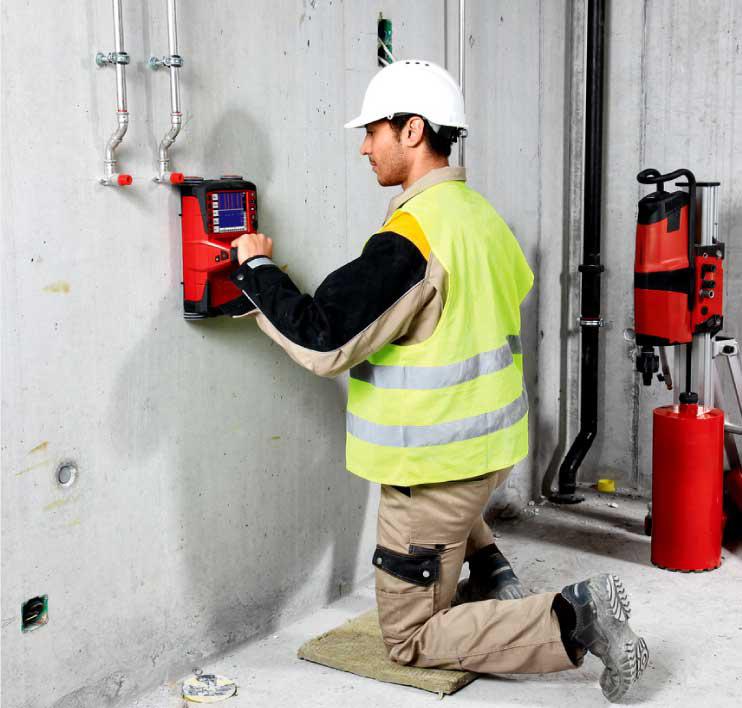RainierGPR Concrete Scanning: Professional Insights and Finest Practices
Wiki Article
Checking Out the Midst: A Comprehensive Overview to Concrete Scanning and Its Diverse Applications
In the world of construction and infrastructure development, the precise process of concrete scanning holds a crucial duty in ensuring the architectural stability and safety of projects. As innovation continues to advance, the applications of concrete scanning have actually broadened much past mere surface-level analyses. From spotting rebar and post-tension cable televisions to mapping out conduits and voids concealed within concrete frameworks, the abilities of contemporary scanning techniques are both remarkable and essential. However, the true depth of concrete scanning's prospective reaches even additionally, branching into unforeseen fields and triggering cutting-edge services. The interconnected web of opportunities that concrete scanning offers is not only remarkable however likewise important for the development of various sectors.Importance of Concrete Scanning
Understanding the relevance of concrete scanning is vital in making sure the safety and honesty of frameworks throughout building and renovation tasks. Concrete scanning makes use of innovative technologies such as ground-penetrating radar (GPR) and electro-magnetic induction to spot ingrained items, spaces, or various other anomalies within concrete frameworks.Additionally, concrete scanning plays a pivotal role in making sure compliance with building codes and laws that mandate the protection of existing structural elements during construction activities. By precisely drawing up the inner structure of concrete, scanning technologies enable construction specialists to make educated choices that maintain the architectural stability and toughness of structures and facilities jobs. Basically, the value of concrete scanning hinges on its ability to guard both the structural honesty and the personnel involved in building endeavors.
Technologies Used in Concrete Scanning
Concrete scanning depends on innovative innovations such as ground-penetrating radar (GPR) and electro-magnetic induction to properly identify ingrained items and anomalies within concrete frameworks. Ground-penetrating radar runs by emitting high-frequency electro-magnetic waves right into the concrete.Electro-magnetic induction, on the various other hand, works by producing electromagnetic areas around a concrete structure through a transmitter coil. When metal objects are present within the concrete, they interrupt these magnetic fields, triggering eddy currents to stream with the steel. By gauging the changes in the magnetic fields with a receiver coil, the system can pinpoint the area of metal items in the concrete.
These cutting-edge technologies play a critical duty in non-destructive testing, guaranteeing the safety and integrity of concrete frameworks in numerous sectors.
Applications in Construction Industry
Within the building sector, concrete scanning modern technology discovers diverse applications that boost task performance and security. One crucial application is the discovery of rebar, post-tension cables, and various other ingrained items before boring or reducing right into concrete structures. By accurately drawing up these elements, building and construction groups can prevent pricey damages, guarantee architectural stability, and prevent prospective safety and security threats. Additionally, concrete scanning is made use of for locating gaps, such as air pockets or locations of deterioration within concrete, which can jeopardize the overall stamina of a structure. By determining these spaces early on, building and construction specialists can take needed actions to address them and keep the longevity of the building. Concrete scanning plays a crucial role in high quality control by validating the density of concrete covers over support, making sure compliance with design specifications and requirements. In general, the applications of concrete scanning in the building market contribute significantly to streamlining project process, decreasing dangers, and providing high-quality results.
Safety Benefits of Concrete Scanning
In the realm of construction safety, the application of concrete scanning modern technology offers a vital benefit in preemptively recognizing prospective dangers and strengthening architectural integrity. By using sophisticated scanning techniques such as ground-penetrating radar (GPR) and electro-magnetic induction, building groups can precisely situate rebar, post-tension cables, avenues, and other covert things within concrete frameworks. This positive technique considerably reduces the threat of unintentional strikes throughout drilling, reducing, or coring tasks, thereby stopping expensive damages, injuries, and job hold-ups.Moreover, concrete scanning enhances worker safety by providing real-time details regarding the structural problem of concrete elements. This information makes it possible for construction professionals to assess the honesty of existing structures, recognize wear and tear or flaws, and make educated decisions regarding fixing and upkeep procedures. By addressing potential safety issues promptly, concrete scanning contributes to creating a safe functioning setting and alleviating the chance of architectural failures or mishaps on construction sites. Inevitably, the safety and security advantages of concrete scanning not just safeguard read the article lives and properties yet likewise click this site maintain sector requirements for top quality and integrity.
Future Patterns in Concrete Scanning
Emerging developments in scanning innovation are poised to revolutionize the area of concrete evaluation and evaluation. By harnessing the power of AI, these systems can examine substantial amounts of information accumulated during scanning procedures to give more in-depth and accurate insights right into the condition of concrete structures.Another substantial pattern is the development of even more user-friendly and mobile scanning devices. Miniaturization of scanning devices permits easier access to confined rooms and remote areas, making inspections a lot more detailed and effective. In addition, developments in wireless interaction innovations enable real-time data transfer and analysis, assisting in quicker decision-making processes.
Furthermore, there is an expanding emphasis on sustainability in concrete scanning technologies - RainierGPR Concrete Scanning. Producers are increasingly incorporating green materials and energy-efficient functions into their tools to decrease environmental impact. These future fads are set to improve the performance, precision, and sustainability of concrete scanning methods, forming the sector's future landscape
Final Thought
In final thought, concrete scanning plays a critical function in the building and construction industry by making certain the safety and performance of different projects. As technology advancements, the future of concrete scanning holds encouraging growths for boosting building procedures.

Report this wiki page